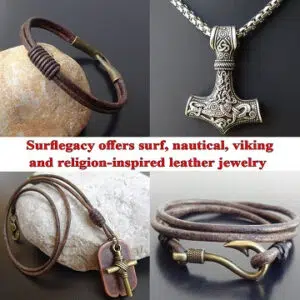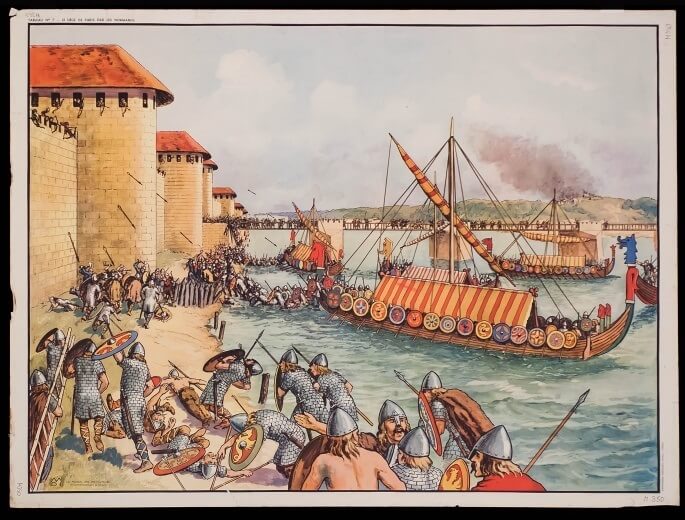The Vikings were a people that lived in Scandinavia from the 8th to the 11th centuries. They were renowned for their sailing and combat skills, as well as their raids in other countries.
Throughout the 9th and 10th centuries, the Vikings conducted a series of remarkable raids across Europe, consolidating their reputation as some of history’s deadliest warriors and pillagers.
They finally conquered much of modern-day England and France, forever altering the course of history.
Why did the Vikings attack Paris?
One of the reasons the Vikings attacked Paris was that it was a very important stop on a trade route. Paris had been an important stop on north-south trade routes since the 3rd century. Control of this important trading port would have been very important for the Vikings. After the death of Charlemagne, they realized that the new leaders were less prone to put up a fight and more willing to pay a ransom, so for them, it was an “easy” way to make money.
How many times did the Vikings attack the Frankish Empire?
The first Viking raid on the Frankish empire occurred in 799. In 810 Charlemagne then decided to create a defense system along the northern coast, thanks to this defensive system was repelled a further Viking attack occurred in 820 ( when Charlemagne was already dead) when 13 ships made their way up the Seine and landed.
The attackers, however, had no idea what to find and were promptly beaten by the coast guards. The survivors escaped to their ships and withdrew. After Charlemagne’s death, his three sons vied for authority, and the area degenerated into civil war. The Treaty of Verdun of 843 CE ended these conflicts by dividing the empire amongst Louis I’s sons. East Francia was given to Louis the German (r. 843-876 CE), Middle Francia was given to Lothair (r. 843-855 CE), and West Francia was given to Charles the Bald (r. 843-876 CE).
Systematic raids began only in the mid-830s the most important ones took place in Antwerp and Noirmoutier in 836, Rouen (on the Seine) in 841, where the Monastery of Fontenelle and the Abbey of Saint-Denis, were looted, and Quentovic and Nantes in 842. By now it was clear that the next goal was to seige Paris.
What year did the Vikings attack Paris?
The first one was made by Ragnar in 845, then in 858 a second one was perpetrated by Bjorn Ironside (supposed son of Ragnar Lothbrok) and the last one was made in 885-886 by Sigfried. In total we have 3 raids, there were a few more, but they were not direct to Paris.
The siege of Paris in 845
The siege of Paris in 845 was the first attack brought by the Vikings to Paris. The Vikings, occupied and sacked the city, abandoning it only after receiving a reward of 7,000 livres in gold and silver.
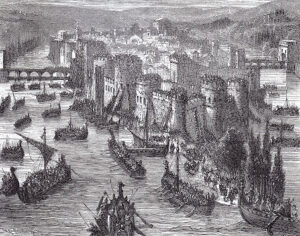
Siege of Paris 845 CE
In March 845, a massive Viking fleet of 120 ships with more than 5000 men, entered the Sein and under the command of a chieftain known as “Reginherus,” or Ragnar, sacked the city. This Ragnar has been identified as the legendary saga figure Ragnar Lodbrok, (see also our article: Who were the Danish Vikings) but this is debatable. During this first raid, 111 Frankish were hanged in the name of Odin.
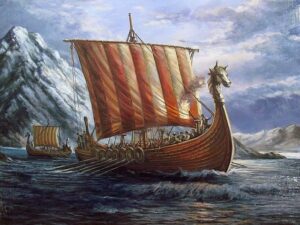
Viking ship Drakkar
Franks’ emperor Charles the Bald was submitted and forced to pay a large tribute in gold and silver to make them abandon the city. It took about 2 more months for Charles to collect the money.
In the meanwhile, a plague broke out in Viking’s camp. The Norse had been exposed to the Christian religion, and after initially praying to the Norse gods, they undertook a fast, following the advice of one of their Christian captives, and the plague subsided.
This expedition, however, was not without incident. Much of the city’s riches had been taken to safety in anticipation of the coming of the Vikings, and many of their soldiers died of dysentery.
As a matter of fact, more Vikings perished from dysentery during this raid on Paris than from any other form of conflict. However, it showed enough potential for the Vikings to attempt more attacks in the following decades.
The ease with which the Franks surrendered and were willing to buy peace in exchange for gold, silver, or land only increased the attacks by the Vikings in the years to come.
In fact, they returned to the region in the years 851-852 under the command of Asgeir and subsequently in 876, a fleet of 100 ships probably commanded by Rollo looted the region around Rouen, Charles once again in order to stop these attacks had to pay a ransom of 5000 livres in silver. In 885 the Vikings were back in action ready to conquerer Paris.
The siege of Paris in 885-886
The second siege of Paris lasted almost a year, from 885 and 886.
The Vikings led by Sigfried this time arrived with more than 700 ships.
After the first siege, the Franks had fortified the city and especially the bridges, The defense was in the hands of Odo count of Paris and his younger brother Robert. They were able to hold out for months until the arrival of the troops of Emperor Charles the Fat, who, preferring not to risk a battle, made a deal with the Vikings by bargaining their withdrawal in exchange for a silver tribute.

The people of Paris did not see well this cowardly behavior of Charles, so he was deposed and Odo took his place, becoming the new king.
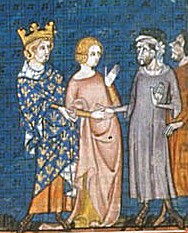
14th C. depiction of King Charles
Odo the Magnificent (r. 893-923 CE) was proclaimed king by the nobility of West Francia in 893 CE. Odo would govern for 10 years until being requested to abdicate in favor of Charles the Simple. In 898 CE, Charles ascended to the throne without opposition.
Rollo stayed in West Francia after the Siege of Paris 885-886 CE, plundering up and down the Seine.
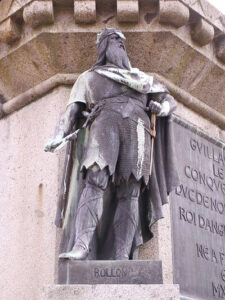
Rollo’s statue in Falaise
Commanders under Charles the Simple achieved some advances in battling the Vikings in 897-898 CE, but they were unable to expel them or cease the invasions.
In exchange for turning to Christianity and becoming Charles’ obedient vassal, the Viking leader would get territory and the king’s daughter, Gisla, as a bride.
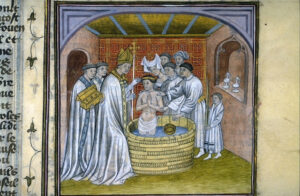
Baptism of Rollo
In 911 CE, the Treaty of Saint Clair Sur Epte was signed. Rollo became the king’s champion, and Viking assaults on the surrounding region along the Seine were put to a stop. He repaired the settlements ravaged in earlier attacks, enacted stricter regulations, and subsequently supported Charles I’s effort to restore order.
How Closely Did the TV Show Follow History?
The Viking incursions into Paris are depicted in the television series Vikings, both in Season 3 in which Ragnar Lothbrok assaults the city and conquers it, and in Season 4 in which Rollo defends it.

Ragnar Lothbrok
Obviously, the main objective of the television series is to entertain the audience and consequently certain historical liberties are necessary, and also shared, at most if we want to see something that sticks as closely as possible to the reality of the facts, we should go for a documentary, which would probably be the right choice.
Let us begin first by saying that Ragnar’s raid, as portrayed in the TV series, has little in common with Reginherus’s actual raid on Paris in 845 A.D., although some elements of this raid are used in the third season, when Ragnar’s army acts as mercenaries for Princess Kwenthrith of Mercia and attacks the weaker Mercian army on one side of the river, while the rest of the Mercian forces, on the other side, can only watch helplessly.
There is no indication that the Vikings disassembled their ships and brought them overland to attack the city from above in the attacks of 845 CE or 885-886 CE. Gisla was a little child (possibly as young as five years old) when she was engaged to Rollo, therefore her valiant rallying of the warriors during the siege never took place. Only Odo’s defense of the city is realistically described; his romance with Therese and attempt to overthrow Charles are fictitious.
Conclusion
The Vikings attacked Paris, and the reason was most likely due to the fact that Paris was an important trading center at the time. It was also a rich city with many valuable resources. Add to this the fact that after the death of Charlemagne none of his successors was as strong a leader as he was, this brought to the Vikings a greater awareness of success in their attacks, The Vikings would have seen this as an opportunity to plunder the city and acquire a large amount of wealth and resources, and they did not let slip away.
Shop Viking Jewelry
Are passionate about Vikings or Old Norse mythology? Finding the ideal piece of Viking Jewelry can be challenging, especially if you lack inspiration or don’t know where to look. At Surflegacy, we have a wide range of Viking Jewelry in various styles, shapes, colors, and materials, to accentuate your Viking spirit and look. Visit our shop here
